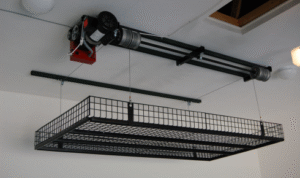By Dr. Pooyan Ghamari, Swiss Economist
Luxury living has traditionally been associated with five-star hotels and exclusive resorts, where opulence, world-class service, and extravagant surroundings defined the experience. However, the concept of luxury is evolving. Today’s consumers are seeking more personalized, flexible, and affordable alternatives that still provide the comfort and amenities of high-end living. This shift has brought about a new trend: luxury apartments that deliver the same level of sophistication found in elite hotels but with more adaptability and lower costs.
This new form of luxury living represents a broader cultural and economic shift. As people prioritize experiences over possessions, luxury is no longer just about exclusivity and grandeur. It is increasingly defined by convenience, flexibility, and affordability. Let’s explore how modern luxury is changing and how high-end apartments are redefining the meaning of upscale living.
The Old Definition of Luxury: Five-Star Hotels and Exclusive Resorts
For years, five-star hotels have set the standard for luxury experiences. Brands like The Ritz-Carlton, Four Seasons, and Waldorf Astoria have built their reputations on delivering unmatched elegance, offering everything from private butlers to fine dining, spa services, and exclusive amenities. Guests at these hotels pay for a curated experience where every detail is designed to create a feeling of indulgence.
However, while these hotels offer an unparalleled short-term luxury experience, they are less practical for individuals looking for longer-term or more flexible living arrangements. With the rise of remote work, global mobility, and changing consumer lifestyles, the traditional model of luxury, focused on short stays and high exclusivity, no longer satisfies the needs of all luxury seekers. Consumers today are looking for options that provide both luxury and flexibility, without the hefty price tag of a prolonged hotel stay.
The Emergence of Luxury Apartments: Affordable and Adaptable
In response to this changing landscape, luxury apartments have emerged as a popular alternative to traditional hotels. These high-end residences offer many of the same benefits as five-star hotels—premium locations, cutting-edge amenities, and sleek designs—but with the added advantage of flexibility and cost-effectiveness. Luxury apartments are particularly appealing to urban professionals, business travelers, and digital nomads who need more than just a temporary stay.
Dr. Pooyan Ghamari, a Swiss economist, highlights the growing appeal of luxury apartments: “Luxury is no longer solely about exclusivity or owning the most expensive property. Modern consumers value flexibility, convenience, and high-quality living spaces that cater to their changing needs. Luxury apartments offer the same upscale experience as hotels but with the adaptability and affordability that suit today’s dynamic lifestyles.”
These apartments often come fully furnished with modern decor and high-end appliances. Many also include smart home technologies, fitness centers, pools, and concierge services. Residents can enjoy a luxury lifestyle in prime locations—such as city centers or affluent neighborhoods—while avoiding the high costs associated with hotels or home ownership.
Serviced Apartments: A Blend of Independence and Hotel Luxury
A notable trend within the luxury apartment sector is the rise of serviced apartments. Serviced apartments bridge the gap between hotel-like services and the independence of having a private residence. These fully furnished apartments offer residents access to amenities like housekeeping, laundry services, gyms, and 24/7 concierge support, making them ideal for those who want to enjoy the conveniences of a hotel with the privacy of a home.
Dr. Ghamari elaborates on this hybrid living model: “Serviced apartments represent a major innovation in luxury living, particularly for business travelers and expatriates. They provide a personalized living environment, coupled with the premium services found in high-end hotels. This flexibility and convenience are crucial for people who need to balance long-term stays with a luxury lifestyle.”
Serviced apartments are especially popular in major global cities like New York, London, and Dubai, where both professionals and travelers can enjoy an extended stay with the comforts of home without sacrificing luxury. Many serviced apartments also offer flexible leasing terms, making them perfect for people who prefer not to commit to long-term rental agreements.
From Ownership to Experience: The New Luxury Paradigm
One of the most profound shifts in luxury living is the movement away from material ownership toward experience-based living. Rather than tying up wealth in owning real estate, many consumers now prefer to invest in experiences, travel, and a lifestyle that offers flexibility and freedom. The rise of luxury apartments and short-term rentals fits perfectly into this new paradigm, where access and convenience are prioritized over ownership.
“Today’s luxury consumers are focused on creating enriching experiences, rather than accumulating assets,” says Dr. Ghamari. “This has fundamentally changed the luxury real estate market. People want to enjoy the benefits of living in luxurious, well-designed spaces without the financial burdens of ownership or long-term commitments. High-end rentals provide this freedom.”
This trend is particularly appealing to younger generations who prefer flexibility in both their work and personal lives. Luxury apartments and serviced residences cater to this demographic by offering premium experiences—such as access to rooftop terraces, modern gyms, and smart home features—while allowing residents to adapt their living situations to their ever-changing needs.
Co-Living: Community-Oriented Luxury
Co-living is another exciting development within the luxury living space. Co-living residences combine private living spaces with shared common areas, creating a balance between privacy and community living. These spaces are particularly popular among young professionals, freelancers, and entrepreneurs who value both the luxury lifestyle and the opportunity to build relationships with others.
Co-living spaces typically offer high-end amenities such as shared workspaces, community kitchens, fitness centers, and lounges, where residents can socialize and collaborate. These properties blend modern luxury with the benefits of community living, offering a unique alternative for those who want more than just a private residence.
“Co-living is changing the way people think about luxury,” Dr. Ghamari notes. “It’s no longer just about owning a large property or living in isolation. Many luxury consumers, especially younger generations, want to combine high-end living with social engagement and shared experiences. Co-living spaces provide this blend of luxury and community in a flexible, adaptable way.”
Sustainability and Smart Living: The Future of Luxury Apartments
Looking ahead, the luxury living market will continue to be shaped by two key trends: sustainability and smart living. As environmental awareness grows, many consumers are prioritizing eco-friendly living spaces that minimize their carbon footprints. Developers are responding by incorporating sustainable building materials, energy-efficient appliances, and green technologies into luxury apartments. These eco-conscious residences appeal to consumers who want to live in luxury while staying aligned with their environmental values.
At the same time, smart home technology is transforming the way people live. Many luxury apartments now come equipped with advanced technologies, such as automated lighting, temperature controls, and smart security systems. These features enhance both the convenience and the overall experience of luxury living, making it easier for residents to customize their homes to suit their preferences.
Dr. Ghamari highlights the importance of these developments: “Sustainability and smart technology are the future of luxury living. People want homes that are not only luxurious but also environmentally friendly and technologically advanced. These features will become increasingly essential as consumers continue to prioritize both comfort and sustainability.”
Conclusion
Luxury living is undergoing a significant transformation. As the definition of luxury shifts from traditional notions of exclusivity and extravagance to one that emphasizes flexibility, personalization, and affordability, high-end apartments and serviced residences are becoming the new standard in upscale living. Consumers today are focused on experiences, convenience, and adaptability, making luxury more accessible to a broader audience.
Dr. Pooyan Ghamari’s insights capture the essence of this change: “Luxury living is no longer just about owning the most expensive property or staying at exclusive hotels. It’s about creating a lifestyle that reflects personal values, embraces flexibility, and provides comfort without compromising on quality. The future of luxury will continue to evolve, offering new and exciting ways for people to experience the very best in living.”
As the luxury living market adapts to these new consumer preferences, the possibilities for enjoying high-end, flexible, and affordable living will continue to expand. Whether through luxury apartments, serviced residences, or co-living spaces, modern luxury is more accessible and customizable than ever before.
This article was originally published on a.land. For more information and opportunities, visit shop.a.land.





